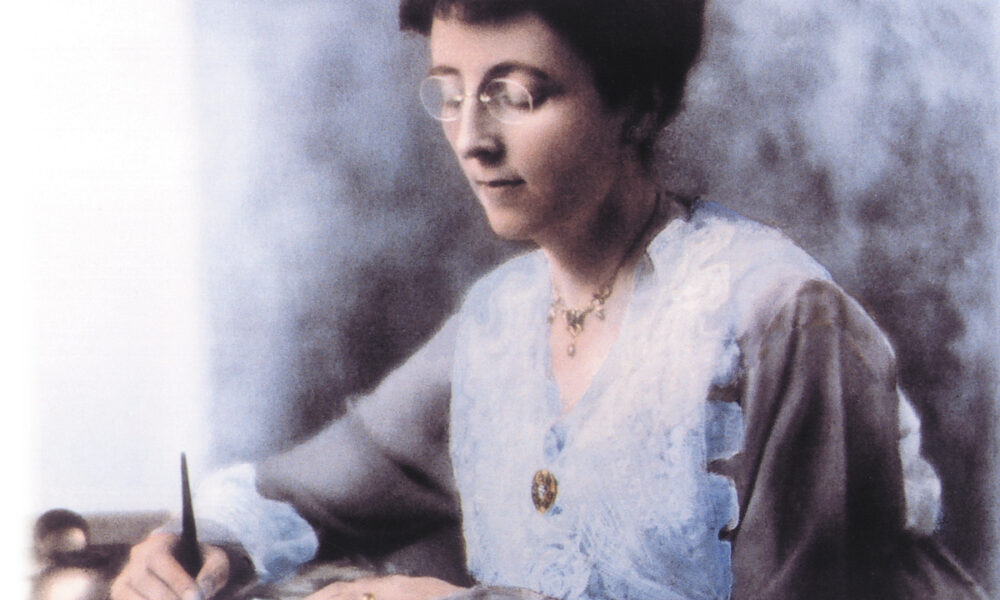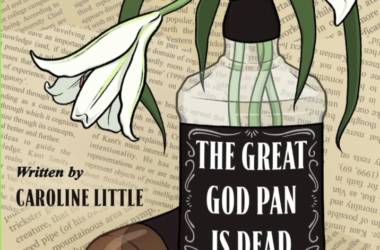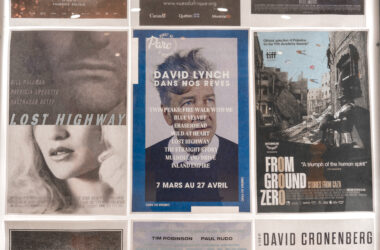I didn’t grow up by the sea. It’s strange that it elicits nostalgia from me—I hadn’t even visited the East Coast until last summer. But it also makes a lot of sense: I spent a good portion of my childhood within books, and many days with Anne Shirley. It started with the first Anne book. In a Victorian novel about Prince Edward Island (PEI), red hair, broken slates, raspberry cordial, and orphanhood, I found a depiction of childhood and the natural world truer than anything I’d ever experienced.
Growing up, Lucy Maud Montgomery’s island seemed to be refracted around me. Southwestern Ontario has a similar softness to it—rolling hills, blithesome rivers, land that’s open, but not flat.
I visited PEI for the first time in August. I wanted to see the place that had existed in my head for so long—there was a temptation to keep it that way, but my desire to feel close to Montgomery overwhelmed my fear of damaging my imagined idyll. I visited the major literary landmarks: Green Gables Heritage Place, the Lake of Shining Waters, Lover’s Lane, and the Haunted Wood. I dragged my boyfriend—who once told me he hated The Sound of Music because there was “too much music”—to see Anne and Gilbert: The Musical.
Montgomery’s old church still stands (it’s now a fast-food joint called “BOOMburger,” but the original exterior has been preserved).
I felt closest to Montgomery in natural spaces—while walking along Lover’s Lane, gazing out at the sea, watching the breeze rustle the grass, looking out at ruddy, eroding cliffs, and anytime I looked at a tree for long enough. In these moments, I had the strangest feeling that I had been there before. And, in a way, I had.
Montgomery’s descriptions of nature are those of someone who has observed something very closely for a very long time. It extends into her prose itself: Blooming with mayflowers; warming with the break of day.
“I felt there was a rhythm in the language that resembled the land itself,” Dr. Elizabeth Epperly, a Montgomery scholar and Professor Emerita at the University of Prince Edward Island (UPEI), said in an interview with The Tribune. Epperly was born in Virginia—her love of Montgomery drew her to the island, where she enrolled as UPEI’s first student in 1969.
“The ocean has its own feeling of striving, standing on the shore,” Epperly said. “Mountains always at least make me feel like striving. They remind me of effort, and of climbing. But because [Montgomery’s] favorite passage was the Alpine Path […] I always thought of the mountains, even the physical ones, as metaphorical [….] And so the ocean, deep as she goes—the illimitable sea—was for her, like the mountains.”
Returning to Montgomery’s novels in the past year, I began to see something that had glided past me before—over time, they take on a certain hardness. As Anne aged, something seemed to change. The darkening of Montgomery’s novels echoes the author’s own evolving worldview and personal trials—but also the fogginess of a society traumatized by the First World War.
“I don’t think [the war] changed her outlook on nature,” Epperly observed. “But I think it changed her outlook on human nature.”
Montgomery’s novels, beautiful and nostalgic, take on new meaning in the era of the climate crisis. The Great War destroyed large swaths of the natural world, and modernity brought about a certain kind of speed: Fast cars, skyscrapers, industry, new forms of communication—many of which are deeply intertwined with fossil fuels.
Montgomery’s writing is highly attuned to natural cycles. I’ve always loved how time passes within her novels: Fresh buds in spring, golden summers, fiery autumns, elegant lacy winters. But recently I’ve begun to notice something else: Decay.
When she left her beloved island upon marrying the Reverend Ewan Macdonald, she revisited the past through her fiction. Many of Montgomery’s works have a lovely stillness to them. They’re vivid and lively, but they displace the reader into a dreamlike bygone past, distorting time by standing still.
Jane of Lantern Hill (1937), one of her later works, opens with the description of a Victorian mansion in Toronto that seems to atrophy. The house is said to have “died thirty years ago.”
Mistress Pat (1935), the sequel to Pat of Silver Bush, takes place over 11 years, when Pat—the heroine who Montgomery said resembled her most in spirit—is a young woman. The first year lasts 110 pages; then, as time goes on, each year takes up fewer and fewer page numbers. The 11th year lasts but 15. At the edge of youth, the days slowly begin to dissolve into the background. The novel ends with Silver Bush, Pat’s beloved home—essentially an extension of her own body—going up in flames. Place decays with life.
“Within the Pat books, there’s a reference to how all the bears have been gone,” Kate Scarth, Chair of L.M. Montgomery Studies at UPEI, told The Tribune. “I forget when the last bear was killed or died in PEI. But there is, you know, a sense in the novels of the community’s hands, of a world that has been dramatically altered.”
After the war, after Montgomery lost a child, after she had left the Island, her writing changed. It’s as if the sun didn’t shine quite as bright upon her heroines—but she continued to write. And she found solace in nature, even as it was being destroyed.
“Montgomery believed that no matter where you were, you could find nature,” Epperly said. “You could, even if it was just looking in a flower pot, you know, seeing it there, too […] It’s that feeling not that we’re escaping out of, but we’re escaping into.”
This June, Montgomery scholars and enthusiasts from around the world will gather at UPEI for the L.M. Montgomery Institute’s Biannual International Conference to escape into her work together over the course of five days.
“It is really such a wonderful event because it really feels like a homecoming,” Scarth said. “You know, whether or not you’ve been there before, because everyone has this shared love [….] It’s just a really collegial and fun and interesting space.”
Epperly’s keynote address at the Conference will incorporate Angus Fletcher’s Wonderworks: Literary Invention and the Science of Stories—exploring why we return to stories through neuroscience.
“No wonder we enjoy rereading all through our lives, rereading favorite books, because […] the actual nerve hints are entangled and so you’re reading your old self as well as creating a new self while you’re reading it. It’s quite an interesting take on a neurological level,” Epperly remarked.
Montgomery describes a kind of veil. Something fluttering between the visible and the sublime, obscuring this world from something else, something untouchable, undefined. But there are moments when the veil blows aside.
“Amid the commonplaces of life, I was very near to a kingdom of ideal beauty. Between it and me hung only a thin veil,” Montgomery wrote. “I could never quite draw it aside, but sometimes a wind fluttered it. I seemed to catch a glimpse of the enchanting realm beyond—only a glimpse—but those glimpses had always made life worthwhile.”
There have been moments where I’ve felt something akin to “the flash.” Clear summer nights on Beausoleil Island on Georgian Bay, walking along the Speed River in Guelph at night after a fresh snowfall—for a moment, or maybe less, everything becomes hyper-sensory. Something else seems to emerge, not only out of the margins, but in the spaces between stars, between pine needles.
This sudden, fleeting escape into another world, a place that seems uncertain and phantasmal, but which I also know to be deeply true, is difficult to describe. The best comparison I can make is to say that this is how reading makes me feel.
Through time, through conflict, personal and political, through the climate crisis, as seasons meld and familiar cycles spin out of control, as the past dissolves, upon each new read the wind lingers a bit longer, and the veil blows back a bit further, and Montgomery’s enchanted realm coalesces the slightest bit more with ours.
Montgomery should be read in childhood—and again in adolescence, and again in adulthood. Her works should be read to comfort and uplift, but also to confront and challenge. Every time I open one of her works, I discover something new that had just slipped out of view, and it makes me yearn to return to the island.









